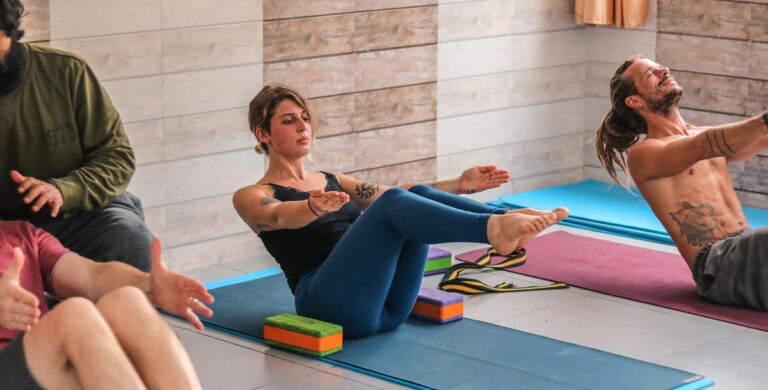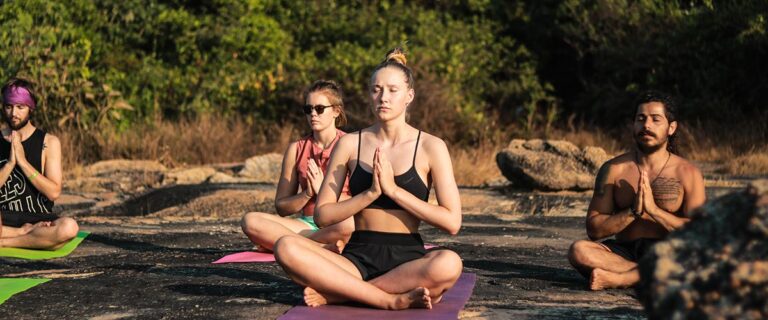Aerial Yoga: Tips for Beginners, Health Benefits, Poses, and More
Aerial Yoga can also be identified as anti-gravity yoga. In the modern form of yoga, aerial Yoga blends traditional yoga poses with the support of a hammock, swing, or silk ropes suspended from the ceiling. It allows practitioners to explore yoga postures with added support and the freedom of being suspended in the air. This unique practice not only challenges the body but also promotes relaxation and mindfulness through a combination of yoga, dance, and acrobatics.
The fabric used for hammocks or swings is typically made from a strong, silky material that can hold your weight securely while allowing you to move fluidly through poses. It offers a full-body workout that improves flexibility, strength, balance, and core stability.
Essential Equipment:
- Aerial Hammock or Swing: Made from durable fabric that can support your body weight and has strong attachment points for safety.
- A ceiling mount or A-frame is required for securely suspending the hammock. Ensuring that it is installed correctly and can bear the weight.
- Yoga Mat, placed underneath the hammock to provide cushioning and stability during poses that require contact with the ground.
- Comfortable clothing is a must. Wearing flexible clothing will allow you to move freely without getting caught in the hammock.
Health and Wellness Benefits of Aerial Yoga
Aerial Yoga combines the principles of traditional yoga with the unique element of suspensions in a hammock, swing, or silk ropes. Below are some key health benefits of aerial yoga:
- Improves Flexibility: The hammock allows for a deeper stretch and an increased range of motion compared to traditional yoga, as the fabric supports the body in various poses.
- Spine decompression: Inverted poses in aerial yoga can help decompress the spine. This reduces pressure on vertebral discs and promotes better spinal alignment and mobility. It can help improve circulation and alleviate tension in the back and neck.
- Relieves stress and tension: The combination of gentle swinging motions, deep breathing, and relaxation techniques in aerial yoga promotes a sense of calm and relaxation. It lowers the cortisol level and overall mental well-being.
- Improved respiratory function: Aerial yoga encourages deep breathing techniques such as Ujjayi breath which enhances the circulation and blood flow in the body.
- Confidence booster: successfully mastering poses in aerial yoga builds confidence and self-esteem. The focus on balance and stability cultivates motor skills which in turn boosts the confidence.
Aerial yoga offers a holistic approach to modern world practice. It is suitable for individuals with various fitness levels. The biggest benefit of practicing Aerial yoga is the playfulness it offers while engaging your mind to the extreme.
Aerial Yoga for Beginners
For beginners, it is important to begin from scratch no matter the experience of an individual.
- Airplane pose
- Begin standing with the hammock at hip height
- Step inside the hammock, allowing it to rest on your sacrum which is your lower back
- Extend your arms out to the sides and lean forward slightly, lifting one leg behind you and extending the opposite arm forward
- Balance and hold for several breaths, then switch sides
- Supported Downward-facing Dog:
- Stand facing the hammock and hold the fabric at chest height
- Lean forward and step one foot into the hammock, allowing it to support your foot and calf.
- Lift your other leg back and straighten both legs into a modified downward-facing dog position.
- Hold and breathe deeply, focusing on lengthening your spine and opening your shoulders.
- Floating Pigeon pose:
- Sit in the hammock with both legs extended straight out.
- Bend one knee and bring the ankle over the opposite knee, creating a figure-four shape.
- Allow the hammock to support your bent knee and outer hip.
- Lean forward slightly to deepen the stretch in your hip and outer thigh.
- Hold for several breaths, then switch sides.
- Backbend in Hammock:
- Sit in the hammock with your back against the fabric.
- Hold the sides of the hammock and gently lean back, allowing the hammock to support your back and shoulders.
- Extend your legs straight out or bend them if needed.
- Open your chest and lift your heart towards the ceiling, maintaining a gentle backbend.
- Hold for several breaths, feeling the stretch across your chest and front of your body.
Advanced Aerial Yoga Techniques
Advanced level Aerial yoga poses require a great amount of strength and control.
- Flying Splits:
- Begin by standing facing the hammock
- Step into the hammock with one foot and allow it to support your bent knee.
- Lift your other leg back and up, extending it towards the ceiling in a split position.
- Hold onto the hammock for support and balance.
- Maintain length in your spine and engage your core muscles. Hold the pose and then switch sides
- Shoulder Stand:
- Invert into the hammock with your shoulders and upper back supported by the fabric.
- Extend your legs straight up towards the ceiling, aligning your body vertically.
- Support your lower back and hips with your hands, using the hammock for stability.
- Hold the pose with awareness of your breath and engage your core muscles.
- Bird’s Nest Pose:
- Sit in the hammock with your legs crossed in front of you.
- Lean forward and bring your hands through the hammock, gripping it from the outside.
- Slowly lift your feet off the ground, tucking your knees towards your chest.
- Extend your arms forward and find balance in a compact, curled position resembling a bird’s nest.
- Hold the pose with control and stability, focusing on maintaining a strong core.
- Backflip:
- This advanced pose requires significant strength and control.
- Start by hanging upside down in the hammock with your hands gripping the fabric.
- Engage your core and legs, then use momentum and control to flip backward, bringing your legs over your head.
- Land softly and gracefully back in the hammock, maintaining balance and control throughout the movement.
- Practice this pose under the guidance of an experienced instructor to ensure safety and proper technique.
- Savasana
- Lie down in the hammock with the fabric supporting your entire body.
- Allow your body to completely relax and sink into the hammock.
- Close your eyes and focus on deep, calming breaths.
- Stay in this position for a few minutes, letting go of any tension and enjoying the sensation of weightlessness
The advanced-level poses should be performed with caution and under supervision. For this, one must find a certified instructor who can guide with proper fundamentals of the practice. Allow yourself to be mindful about the foundational poses, and the techniques to stay consistent in the practice. With patience, comes confidence, hence let the process of building strength begin from scratch.
Conclusion
Aerial yoga practice will allow you to transcend beyond the traditional practice of postures, It will allow you to not just work on your strength but also make it therapeutic. The practice of Aerial yoga pushes an individual to walk across the bridge of synchronization where the mind, body, and spirit align with each other.
Start your Aerial yoga journey today to enhance your existing practice or to just be playful with your physical capacities.






